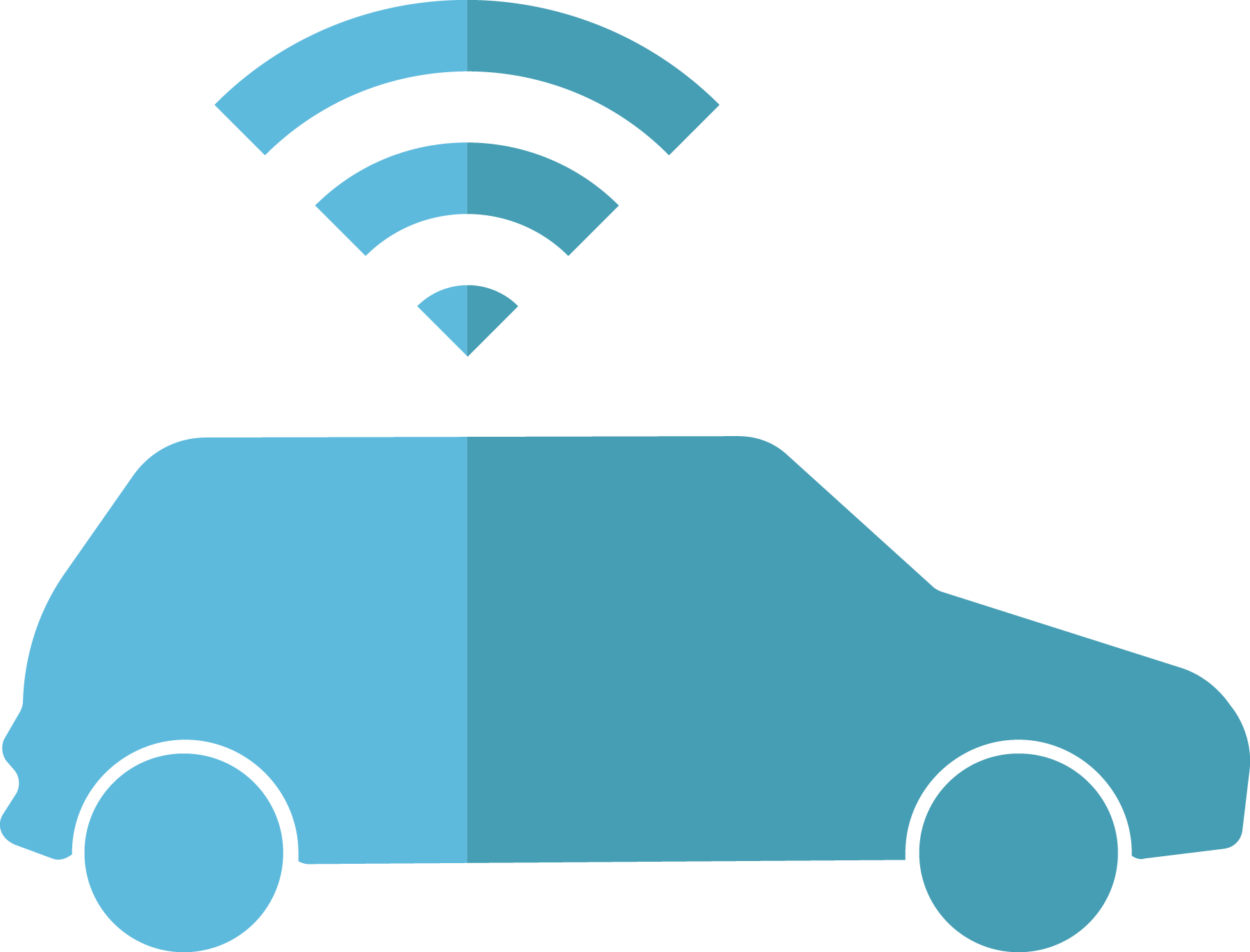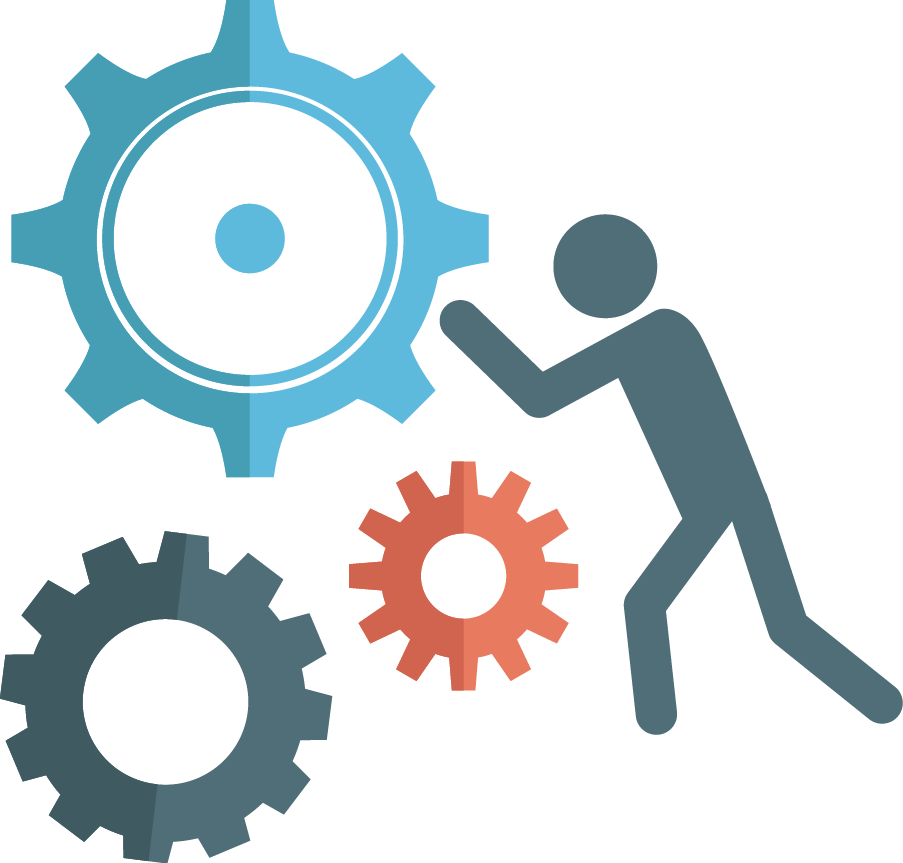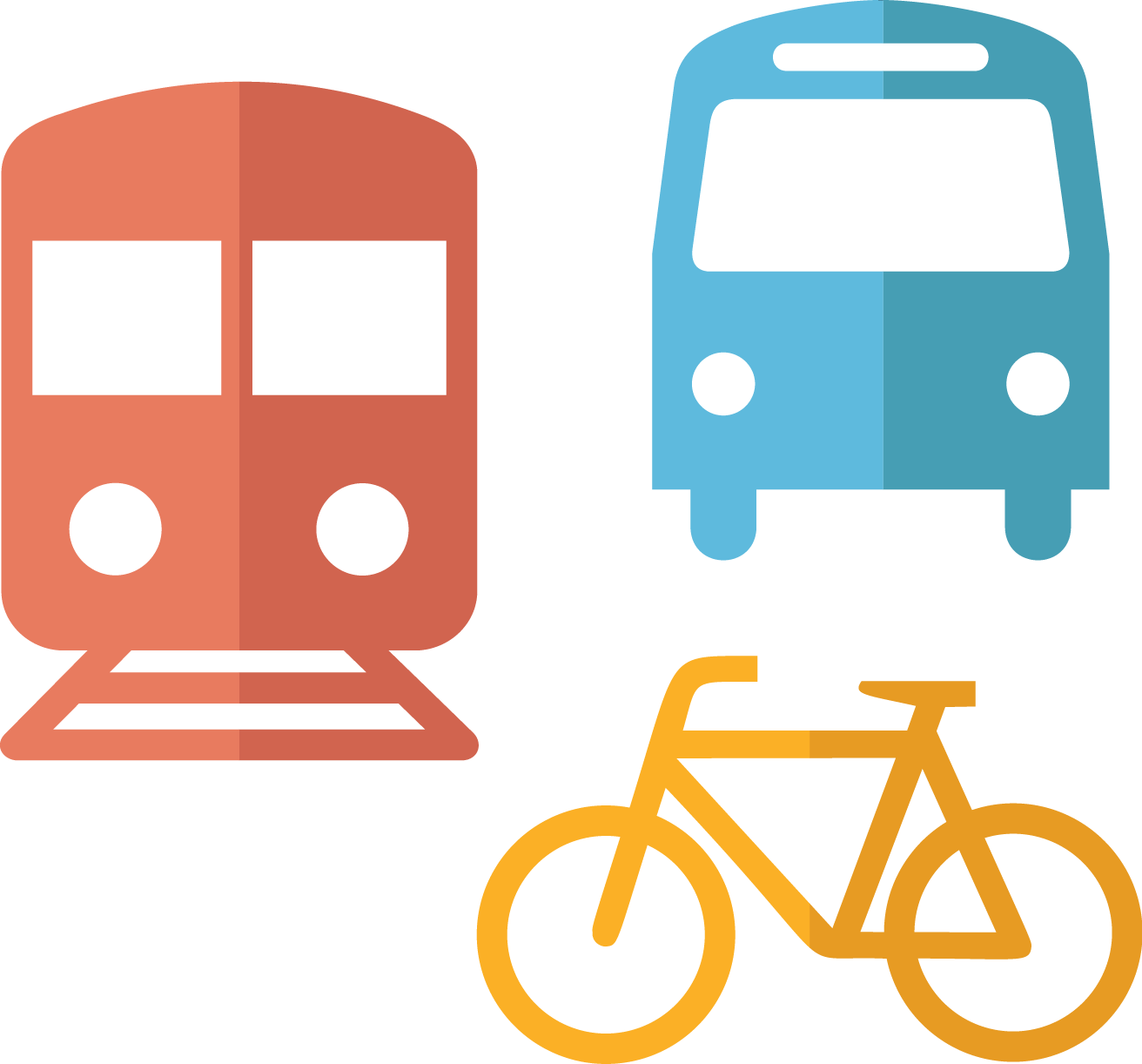Change forces are internal and external factors and trends affecting transportation agencies that disrupt the status quo. They are dynamic and evolving, and their impact can be positive or negative.
Change forces present new challenges and opportunities to an agency that it may not have faced before. Five different types of change forces have been identified in the ACB framework:
• Technology Advancement
• Legislation, Regulation and Funding
• Workforce Evolution
• Shift in DOT Role and Focus
• Public Expectations
Change forces generally impact transportation agencies in one of three ways. First, they may create new requirements or expectations to be met – or opportunities to be realized. For example, increasing public expectations for transparency mean that agencies must step up their communication activities. Second, they may impact the availability or nature of human and financial resources needed to deliver projects and services. For example, reduction in the supply of trained civil engineers means that agencies need to increase recruiting, training and outsourcing. Third, they may impact the validity of long-held assumptions that are at the foundation of planning and engineering methods. For example, the emergence of Transportation Network Company (TNC) services has had significant impacts on travel behavior.
The five types of change forces should be familiar to most transportation agencies – the role of DOTs has been evolving for the last several decades; each federal transportation funding bill has introduced new eligibility and reporting requirements; agencies have made great strides in taking advantage of new information and communication technologies. However, while the change forces are not necessarily new, they are by nature dynamic. They will be impacting transportation agencies in new and different ways in the future. Agencies that track the change forces and consider their likely impacts will be better equipped to overcome challenges and take advantage of new opportunities.
Each of the five Change Forces is described in detail below.
Adoption of new technologies has (and will continue to have) dramatic impacts on how people travel, how transportation systems operate, and how DOTs collect, create, share and use information. For example, DOTs have begun to improve the management and operation of transportation networks using techniques enabled by technology such as adaptive traffic signal control, dynamic lane reversal, dynamic shoulder use, adaptive ramp metering, dynamic pricing, integrated electronic payment systems and advanced traveler information systems.
New technology creates challenges and opportunities for transportation agencies that have far-reaching implications. Continued developments are expected in the areas of information technology (IT), data collection, transportation system management, transportation network companies (TNC) and Connected and Automated Vehicle (CAV) technology. In order to respond, agencies will need to rethink how they do business. They will need a multi-faceted plan for introduction of new technology that considers funding, maintenance and support, workforce skills and abilities, change management, partnerships, and internal management structures and methods. Some of the upcoming challenges and opportunities offered by new technology include:
• Data Collection and Management: It is now possible to quickly and efficiently collect much higher quality data using mobile scanners, remote sensing, drones, crowd sourcing and other methods. Improved technology enables significant increases in the amount of data available, but at the same time presents challenges in data management and makes it necessary for transportation agencies to carefully consider what data to collect and how it will be used to improve decision making.
• Analytics: New data sources and advances in data analysis can provide a better understanding of both transportation system and organizational performance for decision support. Advances occurring in artificial intelligence and machine learning, big data analytics and platform architectures offer opportunities for improved efficiency and effectiveness, but require specialized expertise.
• IT: Information technology continues to improve, with ever more powerful and compact computers, improved network connectivity, more efficient system deployment models and improved decision support. Social media applications are growing in use and sophistication, offering opportunities for new options for public involvement and knowledge transfer within and across agencies. Given the ease with which people can stay connected through telecommunications and videoconferencing technology, many staff will expect to be able to work from anywhere as well.
• Technology Infrastructure: Organizations are increasingly using the cloud for data storage. Information privacy and cybersecurity present growing challenges for agency IT staff. DOTs face an expectation by the public and staff that they will use the latest and most up-to-date technology, despite financial constraints and limited staff resources. Some agencies address this challenge through use of software-as-a-service and bring-your-own-device (BYOD) policies.
• Ride Sharing: Technology-enabled ride sourcing and ride sharing services offer travelers new options, and the long-term impacts on travel, transit and equity are not yet well understood.
• Energy: Advances in energy technology are changing the habits of drivers and creating new infrastructure needs, particularly for electric vehicles, that agencies need to consider. At the same time, these new energy technologies undermine the effectiveness of traditional transportation user fees such as the gas tax and will require DOTs to identify new methods of funding transportation.
• CAV: Agencies are just beginning to grapple with the range of technical and legal challenges associated with emerging CAV technologies and supporting infrastructure needs. Implications for highway design and capacity needs, lane markings, traveler information and cybersecurity are currently being studied. The improvements to safety and energy efficiency that this technology offers are driving the change.
Federal and state legislation and regulations have been and will continue to be significant change forces for DOTs, impacting funding levels, eligibility, flexibility, available financing methods, project planning and development processes, and reporting requirements. Most state DOTS have mechanisms in place to anticipate, prepare for, respond to and even sometimes influence those change forces. They are accustomed to the regular changes that inevitably come with a new administration, at either the state or federal level.
What is different in the current environment is the growing instability and uncertainty of transportation funding, both at the federal and state levels. Transportation user fees, such as gas taxes and registration fees, have provided stable, reliable and substantial highway and transit funding for decades, but that is no longer the case. It has been more than a decade since federal transportation funding has kept pace with transportation funding needs. That lack of sufficient funding, exacerbated by changing travel habits and increasing fuel efficiency, has repeatedly created federal funding shortfalls. According to the American Association of State Highway and Transportation Officials (AASHTO), since 2008, the federal Highway Trust Fund has been sustained through a series of General Fund transfers now amounting to $140 billion. The next federal funding gap, expected to reduce available federal transportation funding by 40 percent in 2021, has yet to be addressed. The situation is similar at the state level for many DOTs.
The funding instability transportation agencies face inhibits their ability to plan for the future. Efforts to reduce the size of the work force in response to both funding constraints and political pressure, coupled with new federal or state regulations, puts new pressure on state DOTS. For example, the most recent federal transportation authorization legislation (MAP-21/FAST) included new requirements for performance management and development of transportation asset management plans. Deadlines included in the federal legislation required state DOTs to implement new methods and technologies fairly quickly, straining limited staff resources. The continued layering of regulatory initiatives and process changes creates a challenging environment for DOTs working with limited resources.
Ultimately, the federal role in transportation funding may shift, with state legislation and funding gaining importance. Future federal changes may allow DOTs to use more creative funding arrangements, enable broader implementation of tolling, public/private partnerships, or devolution of the highway program to the states. The uncertainty surrounding these potential future shifts creates tension for DOTs between the relatively short-term planning of legislative bodies and the longer-term view necessary for DOTs to plan transportation systems that function for the future.
Public agencies face a genuine workforce crisis. The competition for technically strong, management-oriented staff is increasing as technology companies and other sectors outside of transportation seek the same skills in their employees. The current low unemployment rate increases competition for quality staff at all levels, and public agencies are often unable to compete with the private sector in terms of compensation. State DOTs will need to give serious consideration to the factors that make them a preferred work environment in order to continue to attract and retain talent, since a positive work environment is a major factor in the decision to join or stay at an organization.
Shifting demographics require state DOTs to demonstrate a strong sensitivity to and appreciation of the differences inherent in their workforce, which is becoming increasingly as diverse as the communities the DOTs serve. Many state DOTs work hard to value diversity, and Civil Service rules support such efforts. Growing numbers of women, people of color, people with disabilities, and people from different ethnic backgrounds may bring new management styles with them, and a new sensitivity for aspects of transportation that may have been overlooked in the past. In the future, an emphasis on achieving diversity in the DOT workforce and respecting and valuing different points of view may be increasingly important for recruiting new talent.
Changing age demographics may present one of the greatest and most predictable challenges to the state DOT, as experienced workers retire and new generations with different core values assume their workload. The popular descriptions of the generations predominant in the workforce today are generalizations that do not represent every staff person in those cohorts, but they help in a general way to describe the shifting attitudes to be expected in the workforce of the future:
• Baby Boomers (born in the years between WWII and the early 1960s): Many Boomers are now retiring, leaving behind an experience gap. They tend to be long-time employees, loyal to the agency. Even in retirement, they may still have skills to offer the DOT that will require new and creative arrangements outside full-time employment. The retirement of senior staff creates opportunities for the agency to reorganize, working and thinking in new ways.
• Gen Xers (those born in the mid to late 1960s and 1970s): Gen Xers are generally hard-working, independent, and resourceful but are skeptical of authority and tend to avoid undue attention. Their entrepreneurial tendencies and desire for work/life balance may challenge organizational norms created in the Interstate era after WWII. Many may be reluctant to take on management authority.
• Millennials (born in the 1980s and early 1990s): The Millennials are now the largest cohort in the general workforce. They tend to be highly tech-savvy and collaborative, and value work flexibility and work/life balance. They are motivated by purpose-driven work, which makes them a good fit for public service, if they can adjust to the rules and regulations inherent in government. They are highly competent and ambitious, and eager for greater responsibility. They tend not to stay in one organization for their entire careers, and may question those who do.
• Gen Z or Zoomers (born in the late 1990s and 2000s): It is too soon to know much about the work ethic of the newest cohort entering the workforce. However, Zoomers may be characterized by their exposure to global culture and their reliance on internet-connected smart phones and social media. It is likely that they too will value flexibility, work/life balance and early responsibility, but time will tell.
Adapting to shifting age demographics require new approaches. Younger staff bring new expectations for upward mobility and seek greater clarity and transparency about how to advance within the organization. State DOTs need to develop creative ways to attract them, and may need to adjust their organizational approach in order to keep them. Greater workforce mobility also requires the DOT to develop systematic approaches to build and transfer institutional knowledge.
In the Interstate era, building new infrastructure was the primary task for DOTs across the country. Large-scale construction of new highways was the norm, and their completion provided dramatically improved travel options for drivers and created photo opportunities for the public officials charged with funding those projects.
With the completion of the Interstate well in the past, now comes the challenge of maintaining both the quality of the infrastructure and the high-speed mobility that Interstates provide. Most DOTS are responsible for a large number of other roads as well. Given limited resources, one big challenge facing DOTs is how to maintain appropriate condition and service across the transportation network.
While DOTs continue to deliver capital projects, there is an increasing emphasis on operations and maintenance to make the most efficient use of existing capacity and maximize the life of physical infrastructure. New technology strengthens the DOT’s ability to improve mobility and safety without expanding highway capacity. A growing public emphasis on the use and importance of other modes, whether within the right-of-way or outside of it, also challenges traditional thinking about road construction. Finally, the increasing occurrence of extreme weather events is prompting agencies to consider retrofitting their transportation system to improve resiliency, and to gather condition data on previously under-examined highway elements, such as culverts, that play an important role when storms or flooding occur.
The shift away from new construction and expansion projects has and will continue to affect DOT organizational structures in the years to come. The growing focus on systems management and operations, incorporation of other modes and improving resiliency across modes requires new skills. These broader issues often cannot be addressed solely by the DOT. There is a continuing need to build and maintain partnerships and improve communication and coordination with a wide variety of agencies.
Public involvement in project development, project planning, construction implementation and long-range planning have long been part of the DOT’s responsibilities. Likewise, the public’s expectation for accountability and transparency are not new to DOTs, but those expectations are growing and evolving. The nature of public interactions is changing because of the options presented by new technology. State DOTs need to adapt, employing strategies that make the most effective use opportunities for public input.
For example, in response to increasing public concern about the impact of extreme weather and increased competition for natural resources, some DOTs have begun to adopt goals related to sustainability. Sustainability seeks to balance social, economic and environmental needs – considering both current and future generations. Meeting this “triple bottom line” requires agencies to rethink their mission(s) and operating principles. Stronger interagency partnerships, expanded public participation, and adoption of risk-based, adaptable decision-making processes are required.
Sustainability isn’t the only concern gaining public traction. The increase in the number and presence of other advocacy groups promoting multi-modal options, equity and equality in transportation, and public health initiatives such as active transportation, air quality and access to medical care add to the challenges facing DOTs.
Addressing these growing public expectations can be made easier with the use of technology. However, new technology initiatives must be carefully planned to ensure that supporting process changes and skills are in place. For example:
• Public Involvement: Technology offers new ways to involve the public in project development and long-range planning that may be more efficient and cost-effective than traditional “town hall” style public meetings. Legal requirements for public involvement may need an overhaul to allow the use of new methods while still ensuring that everyone in the public has an opportunity for comment. New skills may be needed at the DOT to identify and involve previously uninvolved segments of the public, as well as to gather, analyze and address a wider range of public input.
• “Real-time” Information: The public increasingly seeks better information access and real-time data accuracy, given the technology advancements occurring. This can be an opportunity for DOTs to better demonstrate performance progress and the value that transportation adds to the public good. It also presents workload challenges for DOTs and requires improvements to capabilities that enable more agile and efficient information delivery.
• Social Media: With the growth of social media such as Facebook and Twitter, state DOTs need to be increasingly customer-responsive. The ability to respond quickly and diplomatically to customer complaints – or kudos – on social media requires specific skills and can occupy a significant amount of staff time.
• Freedom of Information Act (FOIA) Requests: State DOTs have processes in place to respond to the specific requirements for transparency and timing specified by FOIA (as well as state-level public disclosure requirements). These requests are increasing, and some DOTs are putting in place “self-service” access to data and documents in order to reduce the need for staff time to respond to individual requests. However, agencies need to guard against inadvertently exposing private information that would otherwise be exempt from FOIA.
E-mails, databases and electronic documents are all subject to FOIA requests. The DOT may need to update its FOIA processes and policies to ensure exempt information remains private. DOTs will also need to improve efforts to ensure all staff are aware of the what data and documents can be shared.
• General Communication: The transition from paper to electronic information increases information access and can improve efficiency in managing communications. However, it also requires state DOTs to continually improve how they are communicating, keeping online information up to date, sharing information through electronic mailing lists, and expanding those lists to widen and improve communication. It may also require the DOT to update and review publication policies to ensure online information still complies with requirements of the Americans with Disabilities Act (ADA).



